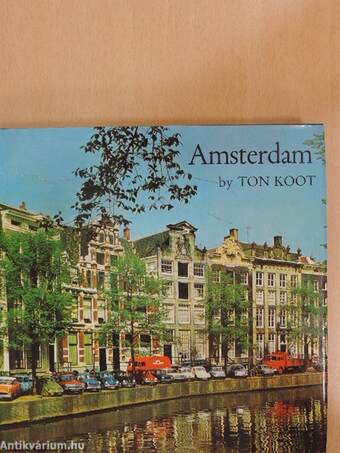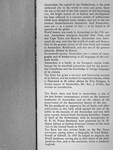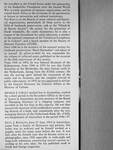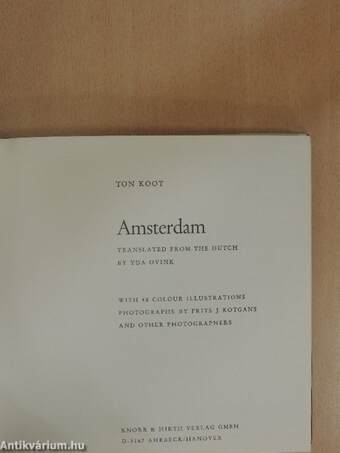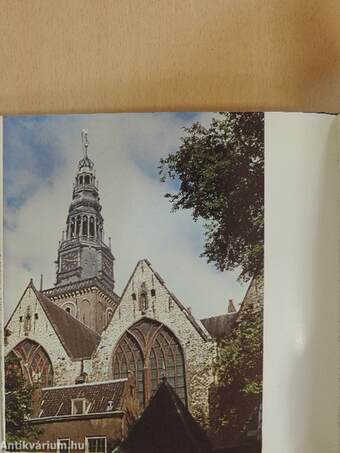1.062.571
kiadvánnyal nyújtjuk Magyarország legnagyobb antikvár könyv-kínálatát

VISSZA
A TETEJÉRE
JAVASLATOKÉszre-
vételek
Amsterdam
Amszterdam
| Kiadó: | Knorr & Hirth Verlag GmbH |
|---|---|
| Kiadás helye: | München |
| Kiadás éve: | |
| Kötés típusa: | Ragasztott kemény kötés |
| Oldalszám: | 137 oldal |
| Sorozatcím: | The Little Art Book |
| Kötetszám: | |
| Nyelv: | Angol |
| Méret: | 18 cm x 18 cm |
| ISBN: | |
| Megjegyzés: | 48 színes fotóval illusztrálva. |
naponta értesítjük a beérkező friss
kiadványokról
naponta értesítjük a beérkező friss
kiadványokról
Fülszöveg
Amsterdam, the capital of the Netherlands, is the most celebrated city in the world in verse and prose. Since the rise at the end of the 16th century of this fascinating city, the bright mosaic of its history and development has been reflected in a constant stream of publications whidi have delighted many readers, and not in the last instance Amsterdammers themselves. And Amsterdam-mers are — as a matter of fact — to be found in all quarters of the globe!
World history was made in Amsterdam in the 17th century. Amsterdam enterprise founded New York, and alsó Cape Town and Batavia. Amsterdam once domi-nated the seas, and alsó the world of trade and fináncé. One of the greatest artists of all time lived and worked in Amsterdam: Rembrandt, and alsó one of the greatest admirals: Michiel de Ruyter.
Seventeenth-century Amsterdam was a centre of carto-graphy and of bookprinting in all languages of the civilized world.
Amsterdam is a leader in the European tourist trade, famous for its... Tovább
Fülszöveg
Amsterdam, the capital of the Netherlands, is the most celebrated city in the world in verse and prose. Since the rise at the end of the 16th century of this fascinating city, the bright mosaic of its history and development has been reflected in a constant stream of publications whidi have delighted many readers, and not in the last instance Amsterdammers themselves. And Amsterdam-mers are — as a matter of fact — to be found in all quarters of the globe!
World history was made in Amsterdam in the 17th century. Amsterdam enterprise founded New York, and alsó Cape Town and Batavia. Amsterdam once domi-nated the seas, and alsó the world of trade and fináncé. One of the greatest artists of all time lived and worked in Amsterdam: Rembrandt, and alsó one of the greatest admirals: Michiel de Ruyter.
Seventeenth-century Amsterdam was a centre of carto-graphy and of bookprinting in all languages of the civilized world.
Amsterdam is a leader in the European tourist trade, famous for its manifold attractions and for the prover-bial friendliness and the knowledge of foreign languages of its citizens.
Ton Koot has given a succinct and fascinating account of its history and has evoked its impressive beauty, which is illustrated in 48 colour photos by Frits Rotgans. A former mayor of Amsterdam, Mr. Arn. J. dAilly, has written an introduction.
Ton Koot, born and bred in Amsterdam, is one of the best known contemporary writers on the historical landmarks of Amsterdam and on the subject of the preservation of the characteristic beauty of the city. He has produced an impressive list of books and other publications in this field, which opened the eyes of the public to the beauties of old Amsterdam and met with great success, several books becoming bestsellers. Copies of Spell of the Netherlands, with an introduction by H. R. H. Prince Bernhard, were presented by H. M. Queen Juliana to leading American citizens on her state visit to the United States in 1952.
Ton Koot has alsó written books on the Boy Scout movement, among others, a biography of Lord Baden-Powell of Gilwell. In 1937 he helped to organize the World Jamboree, serving alsó as chief editor of the daily Jamboree Posty and at the conclusion wrote a Jamboree Logbook.
He travelled in the United States under the sponsorship of the Rockefeller Foundation after the Second World War to study questions of museum organization, and he visited South Africa at the invitation of the government to lecture at universities and cultural institutions. Ton Koot is on the Boards of many cultural and histori-cal organizations, particularly of those active in the field of landmark preservation, such as the "Hendrick de Keyser Society", the society for the protection of Dutch windmills, the castle foundation; he is alsó a trustee of the foundation for aduit education, a member of the national committee of the "Fondation Européenne de la Culture", and a board member of the Society of Museum Directors (ICOM).
Since 1946 he is the secretary of the national society for landmark preservation "Bond Heemschut" and editor of its journal. As editor-in-chief he was responsible for the volume of collected essays published on the occasion of the 50th anniversary of this society. From 1945 to 1970, he was General Secretary of the Rijksmuseum, from 1948 to 1972 he was alsó Castle Guardian of the Muiderslot, the most famous castle in the Netherlands, dating from the XlIIth century. He was the moving spirit behind the restoration of the castle and its furniture, and the complete revival of public subscription. In 1970, he was appointed as advisor to the General Directory for Cultural Affairs at the Ministry of Culture.
arnold J. D'Ailly studied law in Amsterdam, worked for a short period in the Recorder's Office at the Court of Justice in Amsterdam, became secretary of the Board of Managing Directors of a shipping company and travelled to the Far East in this capacity. He was then successively secretary of the stockbrokers'society, managing director of a bank, and, immediately after the war, managing director of the Netherlands Bank. Mr. dAilly was burgomaster of Amsterdam in the period 1946—57.
Frits J. rotgans, born 27 June, 1912 in Amsterdam, comes from a family of illustrators and painters. His father was an architect and he himself worked as a graphic artist for many years before the war. It was only after his fortieth year that he became active as a photographer, since 1955 especially in wide-angle and large-scale techniques, constructing several cameras ac-cording to his own ideas. He has published much in Dutch and foreign magazines. Vissza
Témakörök
- Idegennyelv > Idegennyelvű könyvek > Angol > Művészetek > Építészet
- Idegennyelv > Idegennyelvű könyvek > Angol > Művészetek > Fotóművészet
- Idegennyelv > Idegennyelvű könyvek > Angol > Helytörténet
- Helytörténet > Külföldi > Városok
- Helytörténet > Helyismeret > Várak, építmények
- Művészetek > Építészet > Várostörténet > Külföldi
- Művészetek > Építészet > Kontinensek szerint > Európa > Egyéb
- Művészetek > Építészet > Idegen nyelv > Angol
- Művészetek > Építészet > Műemlékek > Egyéb
- Művészetek > Fotóművészet > Albumok > Tematikus
- Művészetek > Fotóművészet > Idegen nyelv > Angol
- Művészetek > Fotóművészet > Témái > Városok > Külföldi
- Művészetek > Fotóművészet > Témái > Művészetek
Ton Koot
Ton Koot műveinek az Antikvarium.hu-n kapható vagy előjegyezhető listáját itt tekintheti meg: Ton Koot könyvek, művekMegvásárolható példányok
Nincs megvásárolható példány
A könyv összes megrendelhető példánya elfogyott. Ha kívánja, előjegyezheti a könyvet, és amint a könyv egy újabb példánya elérhető lesz, értesítjük.



